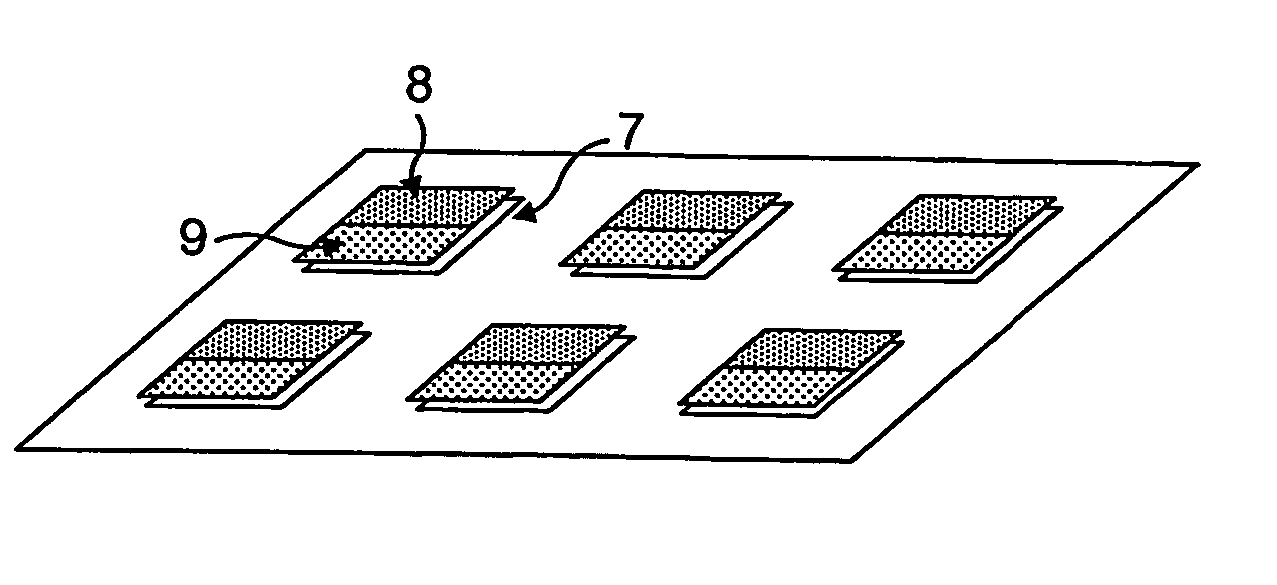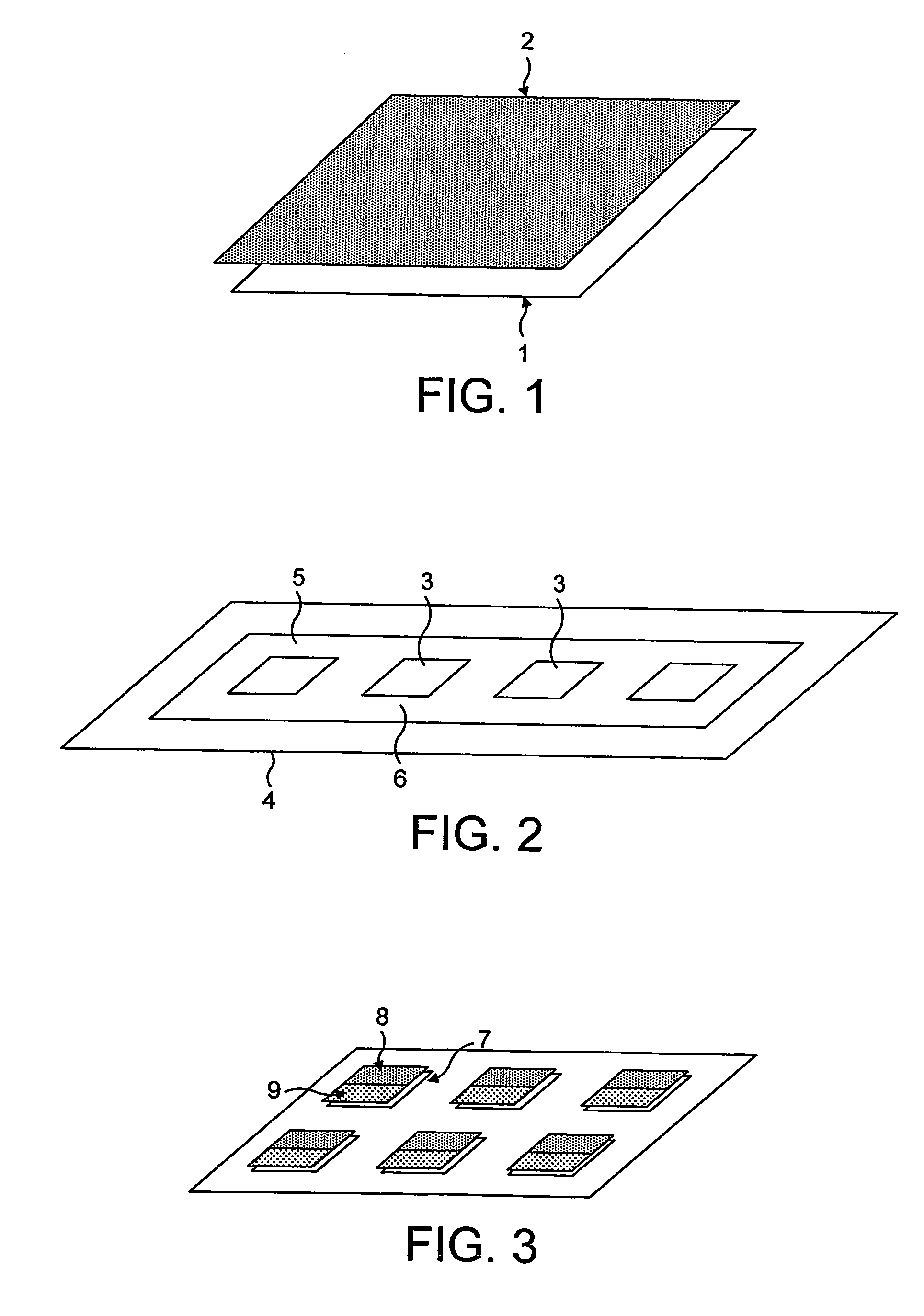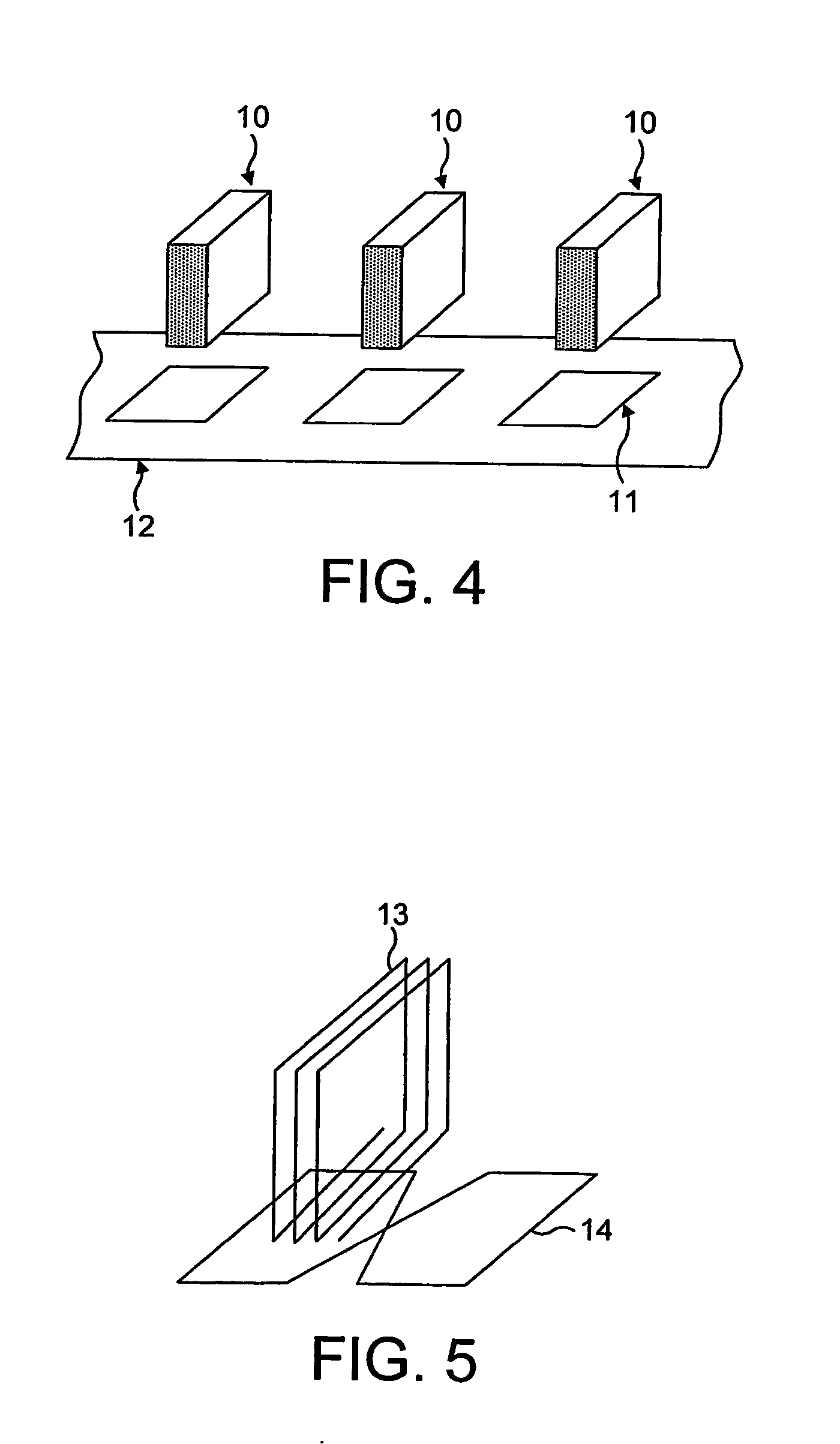Magnetic Tagging
- Summary
- Abstract
- Description
- Claims
- Application Information
AI Technical Summary
Benefits of technology
Problems solved by technology
Method used
Image
Examples
Embodiment Construction
[0036] Magnetically tagged articles in accordance with the present invention may be embodied as a magnetic tag or marker as such that may be affixed to or otherwise mounted on or incorporated into another article to be tagged Alternatively, individual magnetic elements may be affixed to, mounted on or otherwise incorporated in an article to provide a tagged article. In either such case, there will be a spatial distribution of magnetic elements.
[0037] An explanation of these elements will first be given with reference to FIG. 1 of the accompanying drawings. A typical such a magnetic element will comprise a layer 1 of soft magnetic material, typically a magnetic alloy, characterised by a high permeability, low coercivity and a non-linear B-H characteristic, and formed as a discrete region of such material, combined with one or more layers 2 of a medium to high coercivity ferromagnetic material capable of being permanently magnetised. The first or high permeability magnetic element pr...
PUM
 Login to View More
Login to View More Abstract
Description
Claims
Application Information
 Login to View More
Login to View More - R&D
- Intellectual Property
- Life Sciences
- Materials
- Tech Scout
- Unparalleled Data Quality
- Higher Quality Content
- 60% Fewer Hallucinations
Browse by: Latest US Patents, China's latest patents, Technical Efficacy Thesaurus, Application Domain, Technology Topic, Popular Technical Reports.
© 2025 PatSnap. All rights reserved.Legal|Privacy policy|Modern Slavery Act Transparency Statement|Sitemap|About US| Contact US: help@patsnap.com



